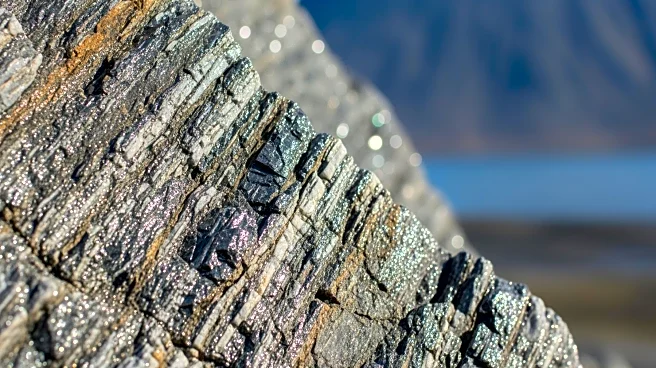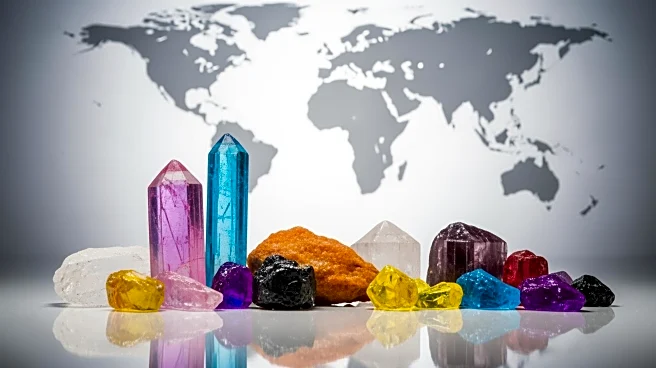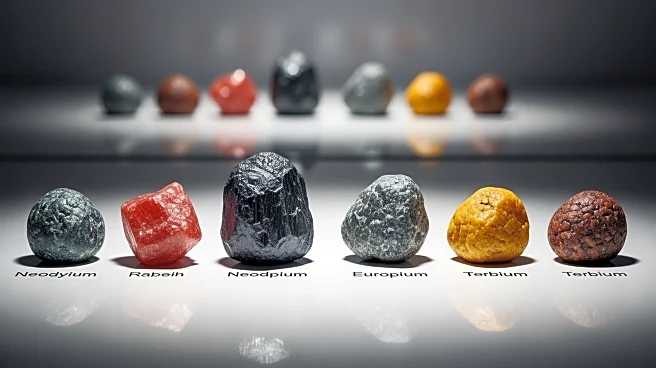What's Happening?
Graphite One has discovered the presence of rare earth elements in its Graphite Creek deposit in Alaska. This finding was made following geochemical analysis of drillcore samples, which revealed elevated
levels of heavy rare earths and key magnet elements such as neodymium, praseodymium, dysprosium, terbium, and samarium. The company is collaborating with the University of Alaska Fairbanks and Activation Laboratories to further quantify the rare earths inventory. Discussions are underway with a Department of Energy National Lab to develop extraction methods for these elements. Graphite One is also engaging with federal departments to strategize its supply chain for advanced graphite products.
Why It's Important?
The discovery of rare earths at Graphite Creek positions the deposit as a significant strategic resource, potentially enhancing the U.S. supply chain for critical materials. Rare earth elements are essential for various high-tech applications, including electronics and defense systems. The presence of these elements alongside graphite, a Defense Production Act Title III material, underscores the deposit's value. This could lead to increased domestic production capabilities, reducing reliance on foreign sources and bolstering national security. The development of extraction and processing methods could also stimulate economic growth and job creation in Alaska.
What's Next?
Graphite One plans to update its rare earths byproduct potential and continue discussions with federal agencies to refine its supply chain strategy. The company aims to transport materials to a manufacturing plant in Ohio, which will include a recycling facility for graphite and other battery materials. This initiative is part of Graphite One's circular economy strategy, which could lead to sustainable resource management and further economic opportunities.
Beyond the Headlines
The integration of rare earths into Graphite One's supply chain strategy highlights the growing importance of sustainable resource management. The company's approach to recycling and co-locating facilities in Ohio reflects a commitment to minimizing environmental impact while maximizing resource utilization. This could set a precedent for other companies in the industry, promoting ethical and sustainable practices in resource extraction and processing.













